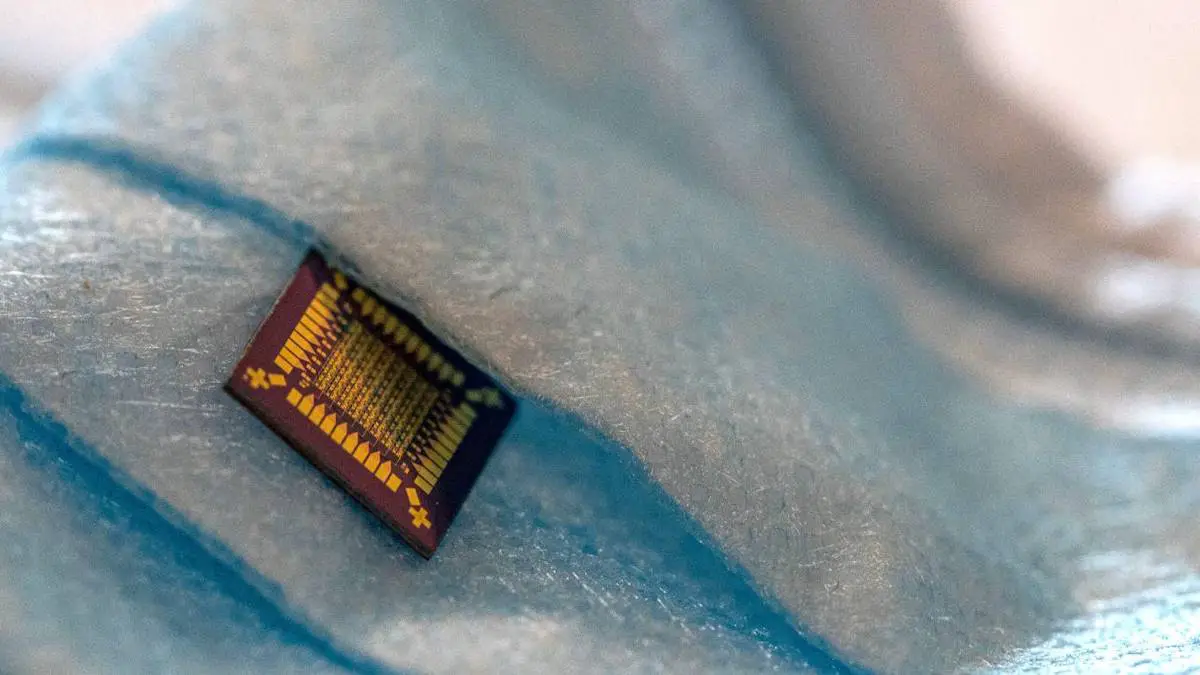What if basic, partially biological electronic components were able to respond directly to the environment and change like living tissue? The American team achieved this by creating transistors whose insulating material is replaced by biological silk.
Silk, a material with amazing properties
Silk fibroin, the structural protein of silk fibers, has the ability to be precisely deposited on surfaces and easily modified by other chemical and biological molecules to change their properties. Functionalized silk in this way can detect a wide range of components originating from the body or the environment.
The researchers first demonstrated a prototype device using hybrid transistors to create an ultra-sensitive and fast breathing sensor that detects changes in humidity. Further modifications to the silk layer could allow the devices to detect certain cardiovascular and pulmonary diseases, as well as sleep apnea, or measure levels of carbon dioxide and other gases and molecules in the breath that can provide diagnostic information.
How biological hybrid transistors work
In the biological hybrid transistor, a layer of silk is used as an insulator. When it absorbs moisture, it acts like a gel transporting the ions (electrically charged molecules) it contains. The door triggers the ” we » by rearranging the ions in the silk gel. Changing the ionic composition of the silk changes the operation of the transistor, allowing it to be triggered by any gate value between zero and one.
“ This opens up the possibility of introducing biology into computing within modern microprocessors ”, commented Fiorenzo Omenetto, professor of engineering at Tufts University. The technical challenge for creating biological hybrid transistors was to achieve silk processing at the nanoscale, down to 10 nm, or less than 1/10,000 the diameter of a human hair.
Towards microprocessors mimicking neural networks
Having billions of transistor nodes whose connections are reconfigured by biological processes in silk could lead to microprocessors acting like the neural networks used in artificial intelligence.
“ In the future, one can imagine integrated circuits that shape themselves, respond to environmental signals, and store memory directly in transistors instead of sending it to separate storage. ”, Professor Omenetto concluded.
Synthetic
Biological hybrid transistors are paving the way for a new era of electronics where components are able to adapt and respond directly to their environment. The potential applications are vast, from disease detection to creating microprocessors that mimic neural networks.
For better understanding
What is a biological hybrid transistor?
A biological hybrid transistor is a transistor whose insulating material is replaced by a biological material, in this case silk. It is able to directly respond to the environment and change like living tissue.
The biological hybrid transistor uses a layer of silk as an insulator. When it absorbs moisture, it acts like a gel transporting the ions it contains. The door triggers the “we» by rearranging the ions in the silk gel.
What are the potential advantages of biological hybrid transistors?
Biological hybrid transistors could lead to microprocessors acting like neural networks used in artificial intelligence. They could also enable the creation of devices capable of detecting certain cardiovascular and pulmonary diseases as well as sleep apnea.
What are the technical challenges involved in creating biological hybrid transistors?
The technical challenge for creating biological hybrid transistors was to achieve silk processing at the nanoscale, down to 10 nm, or less than 1/10,000 the diameter of a human hair.
What is the future of biological hybrid transistors?
The future of biological hybrid transistors looks bright, with many potential applications in electronics and biology.
The main lesson
| Learning |
|---|
| Biological hybrid transistors are transistors whose insulating material is replaced by silk. |
| Functionalized silk can detect a wide range of components from the body or environment. |
| Biological hybrid transistors could enable the creation of devices capable of detecting certain diseases. |
| The technical challenge for the creation of biological hybrid transistors was to achieve the processing of silk at the nanoscale. |
| Biological hybrid transistors could lead to microprocessors acting like neural networks used in artificial intelligence. |
Reference
Caption Main illustration: A breathing detection device built with silicon silk hybrid transistors can quickly and accurately track breathing patterns in real time. Credit: Silklab
The researchers published their results in the journal Advanced Materials. https://doi.org/10.1002/adma.202302062
(writing)

